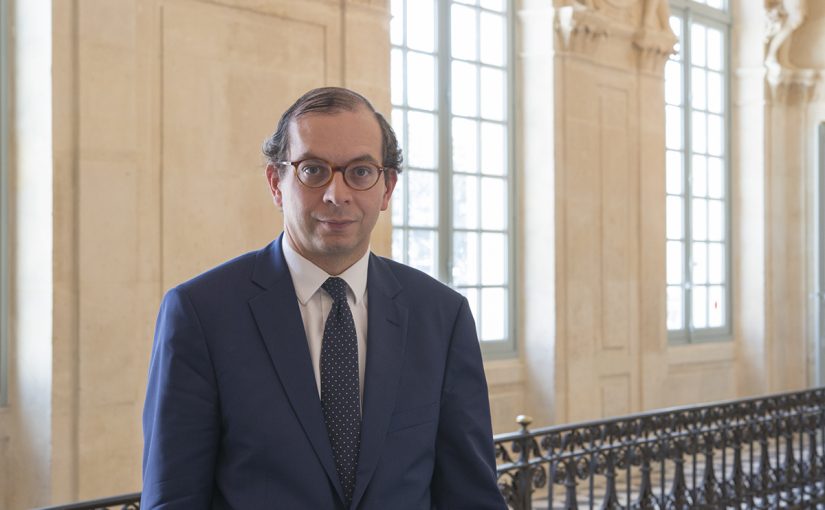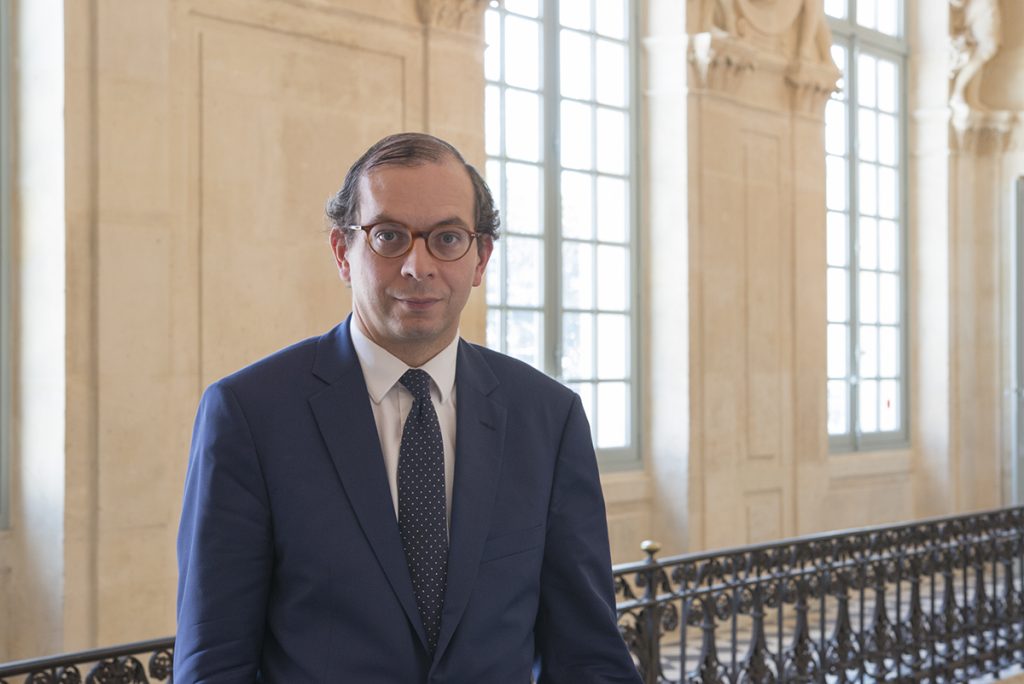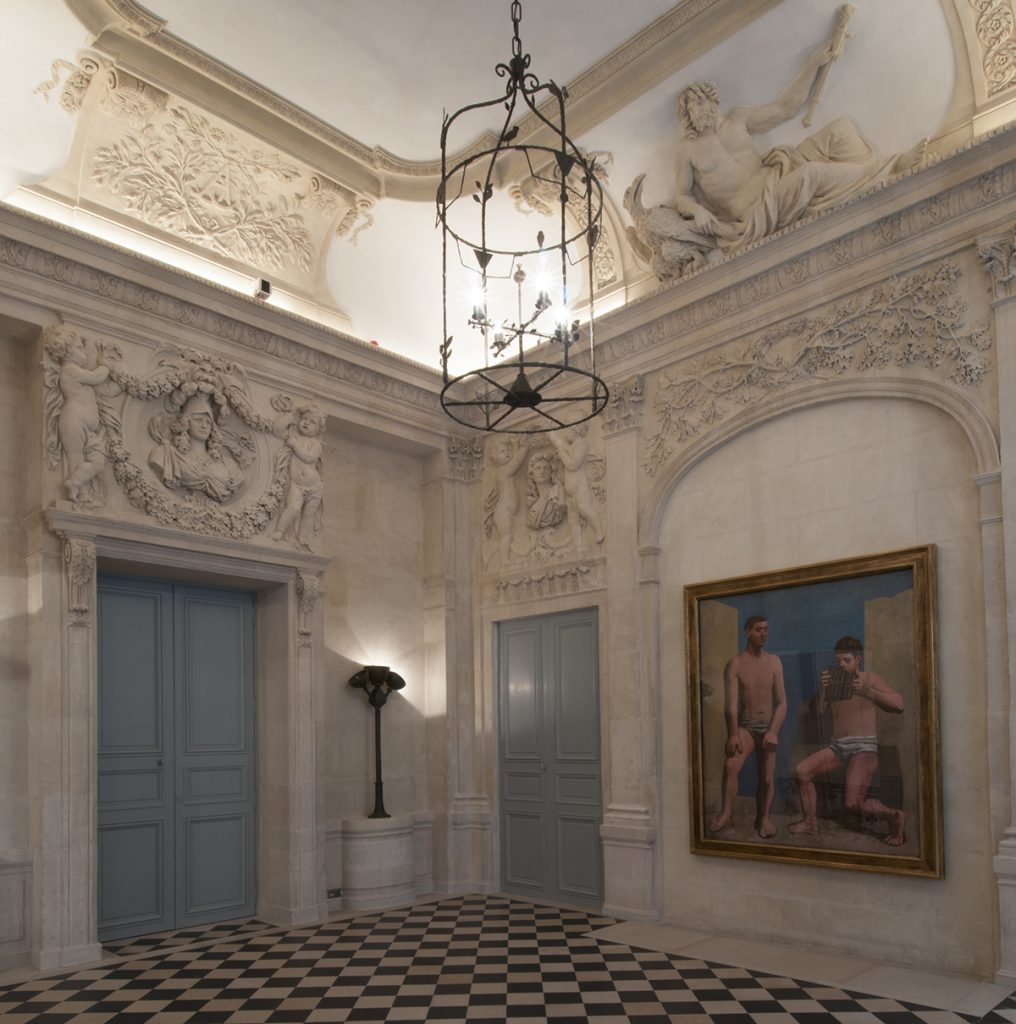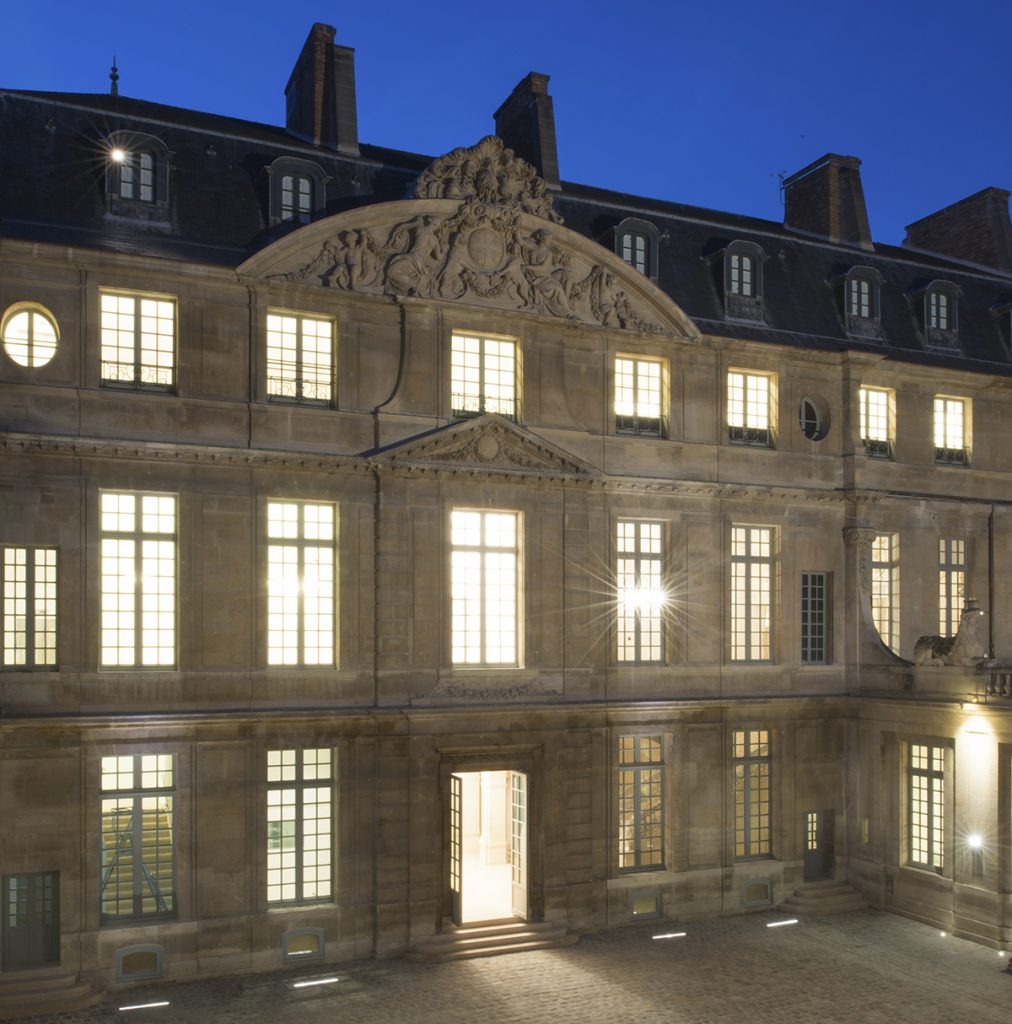
Interview of Laurent Le Bon, President of the Picasso Museum Paris.
 © Musée national Picasso-Paris / Béatrice Hatala.
© Musée national Picasso-Paris / Béatrice Hatala.
Thank you, Laurent, for taking the time to speak with us today. You are one of the most innovative and stimulating people in the museum world in France. You began your career, as a curator at the Pompidou Center in Paris. You were then asked to take on the Pompidou-Metz museum project, and you became the director of that museum in 2010. Since June 2014, you have been President of the Picasso Museum in Paris. An art historian, author and professor, you have also curated major exhibitions. You are well acquainted with the challenges brought by changes in the museum world. We would like to ask you a few questions about this subject and hear your views.
In recent years, the so-called blockbuster exhibitions have been drawing record numbers of visitors. How do you explain their success? What does it mean? And who are the visitors?
The museum model is changing. Traditionally, museums were permanent, immutable places. Today our societies, our lifestyles, value the “temporary” more than the “permanent.” Or at least we are witnessing a blurring or erasing of this distinction. Telling “new stories” that are in step with our modern life and taking a fresh look at the major figures in art are what matters now.
With the globalization of trade and the increasing flows of information, major cultural events, which are promoted internationally with powerful marketing campaigns, attract many visitors from all over the world. The ephemeral nature of these events is part of their appeal. A blockbuster exhibition, like an opera or film, is a cultural “production” aimed at a public in search of exciting experiences.
“Packaging” the “permanent” as a temporary event is a strategy for renewing the museum offering and highlighting the collection. But it also offers the possibility of looking at works in new ways and revealing new aspects of them to an audience whose interest and curiosity must be continually aroused if they are to remain museum-goers.
The two major public cultural institutions inherited from the nineteenth century – museums and libraries – are at a crossroads today. They need to reinvent themselves and find new models. We knew that civilizations were mortal; now we are learning that museums are too. We frequently hear talk of museums being unchanging points of reference. More than ever before, the belief that museums are stable, permanent, and unvarying points of reference is wrong.
It is often said that culture is becoming more democratic. Is that really true? Are the record attendance figures for major exhibitions, which attract visitors from all over the world, proof of that? Or is the reality more complex? And what about the figures for the permanent collections of museums?
There is an overabundance of cultural offerings today, but generally a well-thought-out approach for promoting them and highlighting their value is lacking. However, in today’s very competitive cultural universe, developing a coherent and effective approach to attract diverse publics is crucial. Although more collections are being shown and the blockbuster exhibitions are a success, museums are attracting very few new people. So culture has not been democratized. When French people’s cultural habits are surveyed, the results are always the same: about 30 percent of French people go to a museum during a year, meaning that 70 percent do not. That’s a lot! Especially considering how abundant the offering is.
The figures for the number of visitors to an exhibition also need to be viewed with caution because they are not always different visitors. A significant portion are people who come and then come back again. There are very few first-time visitors to art institutions.
The success of the prestigious major exhibitions obscures a very disparate reality. We cannot really draw any general conclusions from it concerning an improvement in museum attendance. There are 1,200 museums in France, but about twenty of them attract a large majority of museum-goers. That means 1,000 museums in France have very few visitors.
Today, the gap between large and small museums is getting wider, and many museums are in decline.
One new trend we are observing is museums choosing to work with “star” architects. Do you think this is essential now? For a museum to be successful today, must it be housed in an extraordinary building designed by an internationally renowned architect?
Yes, that is a real trend. Art institutions are choosing to work with big names in architecture like Frank Gehry, Jean Nouvel, Tadao Ando, and Renzo Piano. But let me give you an example showing that a museum’s success depends on a more complex alchemy and that an exceptional building, no matter how impressive, does not guarantee a successful museum project. Frank Gehry’s Guggenheim Museum in Bilbao is a fabulous success from every standpoint. The presence of this museum has transformed an industrial city in decline into a major international cultural tourism destination. Less than ten years after Bilbao, Frank Gehry designed the Marta Herford Museum in Germany. This contemporary art museum, which opened in 2005, has not enjoyed the same fate as the one in Bilbao, even though it closely resembles it and displays the Gehry’s unmistakable signature style. This museum has remains fairly unknown and has not turned Herford into a tourist destination. The quality of the architecture, whether the project involves creating a new building or renovating an old one, is of course important, but it is only one factor in a museum’s success.
In your opinion, what ingredients make a museum successful?
There are many ingredients. A top-notch collection is essential, but that is not enough. Some museums that have very unique and remarkable collections, like the Musée des Tissus, the textile museum, in Lyon, are having very serious difficulties.
At a time when the cultural offering is growing, I think it is essential to position a museum in a unique way, and its uniqueness will stem from multiple things. A museum needs to forge a distinct identity for itself. Besides the quality of the container and the content, the building and the collections, its strength will come from its originality. Telling a story and having a communications strategy to support it are important. Having a unique space, a distinctive cultural project, and a competent staff are essential too. Innovative artistic leadership and original programming are necessary. The welcome must be friendly and helpful. In short, hospitality, a spirit of warmth and cordiality, must be offered.
To sum up: a unique place, a quality collection and a hospitable welcome are the backbone of a museum. Those are the ingredients that are indispensable to the success of an art institution. And I believe that today, in such a competitive market, the smaller the institution, the more important it is for the place to be unique. A very good example is, I think, the Unterlinden Museum in Colmar, which was renovated by Herzog & de Meuron.
And what about the financial “ingredient”? Particularly for public museums, with the budget cutbacks we often hear about? Must museums take an entrepreneurial approach? How can they increase their resources
French museums are not so poorly treated, even if there is a lot of talk in the press about their shrinking budgets. Be that as it may, museums must increase their own resources and understand that in a situation where there is an abundance of cultural offerings, they must go out and attract visitors and adapt to the new global market if they are to survive.
To develop new resources, it is of course essential to attract visitors. But it also requires raising funds which presupposes an entrepreneurial approach. It is also necessary to develop international partnerships and co-produce with other institutions. High-quality exhibitions that are put on can sometimes travel, too, and thus reach a larger audience.

What do you think of the new art institutions being created in France by private individuals, for example, the Louis Vuitton Foundation, Maja Hoffman’s project in Arles, and the François Pinault Foundation in the center of Paris, at the Bourse de Commerce? How do the roles of private and public institutions differ, in your opinion, and how are the differences important?
All these initiatives should be greeted with enthusiasm. For example, what is being said and written about the project in Arles and the art patron Maja Hoffman seems very interesting. To my mind, any new initiative is praiseworthy and should be supported.
You said that the boundaries between the permanent and the temporary are being erased. Under those circumstances, how can permanent collections be promoted?
A museum must be a “moviment.” I think this neologism coined by Francis Ponge when the Pompidou Center was being built defines today, more than ever, what a museum must be: that is, a “monument” in “movement.” It is with this spirit of “moviment” that the permanent collections of a museum, especially if the museum is dedicated to a single person, like the Picasso Museum in Paris, must be kept in “movement.” Monographic museums are the most fragile. To arouse and sustain visitors’ interest, it must continually reinvent itself. It must be in constant movement. After the first visit, when the excitement of discovery has passed, ways must be found to stimulate visitors’ curiosity and make them want to come back again. In the past, the fragility of a monographic museum could be seen at the Picasso Museum. Between 1986 and 2009, the number of visitors per year decreased by two-thirds, from one million to 300,000. The year it reopened, there were 800,000, or almost three times as many as in the year preceding its renovation. A monographic museum must continually invent new ways of showing its collection.
How are you making the Picasso Museum a “moviment”?
Since the museum reopened in October 2014, works have been presented on five levels. The presentation is less linear, and we have an original exhibition strategy enabling us to show different works. Our dynamic programming strategy is designed to present Picasso’s work – there are 5,000 works in our reserves! – from different angles in relation to different themes so as to offer new perspectives in the temporary exhibitions. The current exhibition, “Picasso and Sculpture,” is attracting 2,500 visitors a day. It will be followed next autumn by a Picasso–Giacometti exhibition. Then we will put on one focusing on Olga, Picasso’s first wife, who has always remained somewhat in the background. By revealing more about Olga, we will be able to see Picasso and his work in a new way. In 2017, in partnership with the Tate, it will be Picasso and the year 1932. We are seeking to illuminate a different period, which is neither the beginning, the end, nor the war years. The first Picasso retrospective was held in 1932, fifty-one years ago. It was also the year the first volume of the Zervos was published. You see, the idea is always to invent new stories and cast a fresh light on works.
Apart from the strategy of programming temporary exhibitions, we try to offer visitors a very pleasant welcome, one that is friendly and direct. To avoid having to wait in long lines, we have also instituted a system of 30-minute time slots so that visitors can avoid the wait if they wish. We are also developing cultural mediation activities. There are lots of new things to do in this area. For example, we have created a program in which children from a primary school have prepared the visit of the museum for a year with themselves as the guides for the residents of a retirement home. Some of these visitors are seeing Picasso for the first time, while others are rediscovering him through the eyes of a new generation, from a child’s perspective.
Everything that creates connections should be developed. The notion of “We” is motivating; we feel a need to share. We would also like to offer the possibility of spending the night at the Picasso Museum, as can be done in some other countries. It is fascinating and exciting to spend a night in a museum; one see the works and the place in a new way.
But it mustn’t be forgotten that the head of a museum that possesses a permanent collection also spends a lot of time conserving the works that are not being shown. And a lot of resources are used for conservation. That is the paradox of a museum. Nowadays, perhaps more than ever before, a large share of the artworks are not visible. There are more and more collections and collectors, but does that mean works are more and more “visible”? It’s not certain. I even think it’s the opposite. The public can see only a tiny portion of the very large private collections. Art is talked about more and more, we have the impression that the number of collections is growing, but, paradoxically, the works seem less and less visible.

Is there an art institution that you especially like as a visitor?
That would be the Insel Hombroich Museum in Düsseldorf. It’s an unusual place, with exhibition spaces lit only with natural light, no guards, and open on the natural surroundings. I have always felt attracted to museums where one has the feeling of sharing a story. The beauty and uniqueness of the place, the exceptional works, both inside and out, the osmosis with nature, and the hospitality you experience there are enchanting.
By Josette Sayers and Myriam Kryger.

